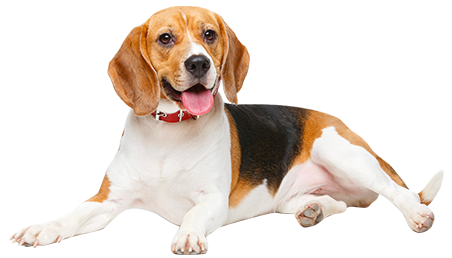Why Grain Free Dry Dog Food is the Best Choice for Allergic Dogs
Why Grain Free Dry Dog Food is the Best Choice for Allergic Dogs
Understanding Dog Allergies: Causes and Symptoms
Dogs, like humans, can develop allergies to various substances. Allergies in dogs can manifest as skin irritations, gastrointestinal issues, or respiratory problems. Common allergens include grains, certain proteins, and environmental factors.
**The Causes of Dog Allergies**
The most
2025/08/03
Why Grain Free Dry Dog Food is the Best Choice for Allergic Dogs
Understanding Dog Allergies: Causes and Symptoms
Dogs, like humans, can develop allergies to various substances. Allergies in dogs can manifest as skin irritations, gastrointestinal issues, or respiratory problems. Common allergens include grains, certain proteins, and environmental factors.
**The Causes of Dog Allergies**
The most prevalent allergies in dogs stem from food sources and environmental triggers. Grain allergies are particularly notable, with common grains such as wheat, corn, and soy often leading to adverse reactions.
**Recognizing Symptoms of Allergies in Dogs**
Symptoms vary widely but can include:
- Itching and scratching
- Red, inflamed skin
- Digestive issues, such as diarrhea or vomiting
- Ear infections
- Excessive licking of paws
If your dog is showing any of these symptoms, consulting your veterinarian is crucial for proper diagnosis and treatment.
What is Grain Free Dry Dog Food?
Grain-free dry dog food is formulated without common grains, catering to dogs with sensitivities or allergies. Instead of grains, these diets often include alternative carbohydrate sources such as sweet potatoes, peas, or lentils, which provide the necessary nutrients without triggering allergic reactions.
Key Ingredients in Grain-Free Dry Dog Food
Understanding what goes into grain-free dry dog food can help pet owners make informed choices. The primary components typically include:
**High-Quality Proteins**
These are critical for muscle development and overall health. Look for sources like chicken, beef, lamb, and fish as the primary ingredient.
**Healthy Fats**
Fats provide energy and support skin and coat health. Opt for sources like chicken fat or fish oil, which are rich in omega fatty acids.
**Alternative Carbohydrates**
Instead of grains, these foods replace them with nutritious options that help maintain energy levels and digestive health.
**Vitamins and Minerals**
Essential for your dog's well-being, these micronutrients support various bodily functions.
Benefits of Grain Free Dry Dog Food for Allergic Dogs
Choosing grain-free dry dog food provides numerous advantages for dogs with allergies.
1. Reduced Allergen Exposure
Eliminating grains from your dog's diet minimizes the risk of allergic reactions. If your veterinarian has diagnosed a grain allergy, transitioning to grain-free food can lead to significant improvements in your dog's health.
2. Improved Digestion
Many dogs with allergies suffer from gastrointestinal issues. Grain-free diets that utilize easier-to-digest carbohydrates can aid in better digestion and nutrient absorption, thus alleviating symptoms like diarrhea and bloating.
3. Healthier Skin and Coat
Grain-free formulations often contain a higher concentration of omega-3 and omega-6 fatty acids. These nutrients are known for their anti-inflammatory properties, promoting healthier skin and reducing itching and irritation.
4. Enhanced Energy Levels
With high-quality protein and easily digestible carbohydrates, grain-free diets can provide your dog with the energy they need for their active lifestyle.
5. Customizable Nutrition
Many grain-free dog foods come in various formulations to cater to specific dietary needs, including weight management, joint health, and more.
How to Choose the Best Grain Free Dry Dog Food
Selecting the right grain-free dry dog food requires careful consideration. Here are steps to guide your choice.
1. Consult Your Veterinarian
Before making any dietary changes, it’s essential to discuss your options with a veterinarian who understands your dog's specific health needs.
2. Read Ingredient Labels
Look for a product where high-quality protein is listed as the first ingredient. Avoid foods with fillers, artificial preservatives, or excessive carbohydrate sources.
3. Check for AAFCO Approval
Ensure the dog food meets guidelines set by the Association of American Feed Control Officials (AAFCO). This certification indicates the food is nutritionally adequate for your dog’s life stage.
4. Consider the Brand's Reputation
Research brands known for their commitment to quality and transparency. Customer reviews and third-party certifications can help you assess a brand's reliability.
5. Monitor Your Dog's Response
After transitioning to a new diet, keep an eye on your dog’s health. Any improvement in their symptoms is a positive indicator that the food is suitable.
Common Myths About Grain-Free Diets
Despite the benefits, several myths surround grain-free dog food. Addressing these misconceptions is essential for pet owners.
1. Grain-Free Means Unhealthy
This is not true. When formulated correctly, grain-free diets can provide balanced nutrition tailored for dogs with specific dietary needs.
2. All Dogs Need Grains
While some dogs can tolerate grains, many cannot. Grain-free diets can be more beneficial for allergies or sensitivities.
3. Grain-Free Food is Expensive
While some premium brands can be costly, there are many affordable grain-free options that don’t compromise on quality.
FAQs About Grain Free Dry Dog Food
1. Can all dogs eat grain-free dry food?
Not all dogs require a grain-free diet. Only those with specific allergies or sensitivities should transition to grain-free options.
2. How should I transition my dog to grain-free dry food?
Gradually mix the new grain-free food with your dog's current food over 7-10 days, increasing the proportion of the new food each day.
3. Are there any side effects to grain-free diets?
Some dogs may experience digestive issues during the transition. Always monitor your dog's health and consult your vet if any concerns arise.
4. Is grain-free dog food more nutritious?
Grain-free dog food can be more nutritious for dogs with allergies, provided it contains high-quality ingredients and balanced nutrition.
5. Can grain-free diets lead to heart issues in dogs?
Recent studies have explored a potential link between some grain-free diets and canine dilated cardiomyopathy (DCM). Consult your veterinarian for guidance on diet suitability.
Conclusion
Choosing **grain-free dry dog food** can significantly improve the quality of life for dogs with allergies. By understanding the benefits and making informed choices about the ingredients, pet owners can ensure their furry friends receive the nutrition they need without unnecessary allergens. Always consult with a veterinarian to determine the best diet for your dog's specific health requirements, ensuring they live a happy, healthy life free from allergy-related discomfort.
Key words:
Previous Page:
Next page:
Contact Us
Address:
No. 22, Jingxing Road, Economic and Technological Development Zone, Nantong, Jiangsu Province.
E-mail:
panghuiqiang@metzpet.com
Contact Phone:
+86-18862996617














